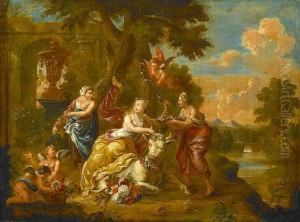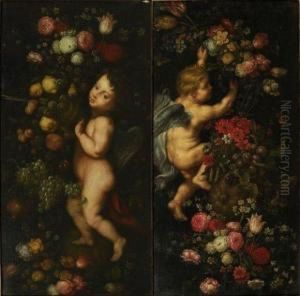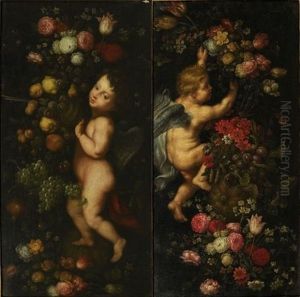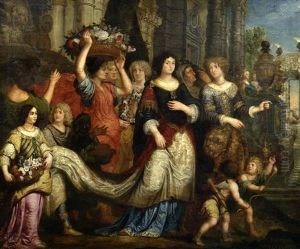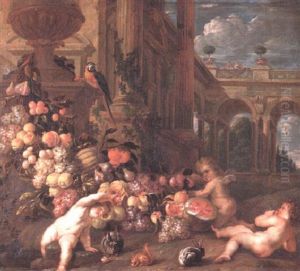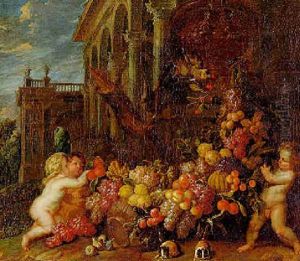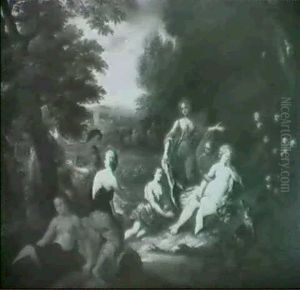Jan Pieter Ykens Paintings
Jan Pieter Ykens was a Flemish Baroque painter, born in 1648 in Antwerp, which was then part of the Spanish Netherlands. His exact date of birth is not well-documented, but he was baptized on March 29, 1648. Ykens came from a family with artistic ties; his father, Pieter Ykens, was also a painter. This familial background provided a nurturing environment for his artistic talents to flourish from an early age.
Ykens was primarily known for his still-life paintings, particularly flower pieces and garland paintings, which were popular in the Flemish region during the 17th century. These works often featured lush bouquets or wreaths surrounding religious or mythological scenes, a genre that was initiated by Jan Brueghel the Elder in collaboration with Italian cardinal Federico Borromeo. Ykens was influenced by these earlier masters and contributed to the development of the genre through his own compositions.
The garland paintings by Ykens and his contemporaries often had symbolic meanings, with the flowers and other elements representing various religious and moral themes. These paintings were not just decorative; they were also imbued with layers of iconography that were understood and appreciated by the educated elite of the time.
Not much is known about Ykens's training, but it is likely that he was apprenticed to a local master in Antwerp as was customary at the time. He became a master in the Antwerp Guild of Saint Luke in the year 1671, which indicates that by this time he had established himself as a proficient artist.
Ykens's works were collected by patrons in the Low Countries and beyond. Despite his apparent success, there are relatively few records of his life, and today, he is not as widely known as some of his contemporaries. Nevertheless, his paintings still exist in art collections and museums, and they stand as a testament to the rich tradition of Flemish Baroque painting.
Jan Pieter Ykens passed away in 1695 in Antwerp. His death marked the end of his contributions to the Flemish artistic legacy, but his works continue to be studied and appreciated for their beauty and historical significance.
